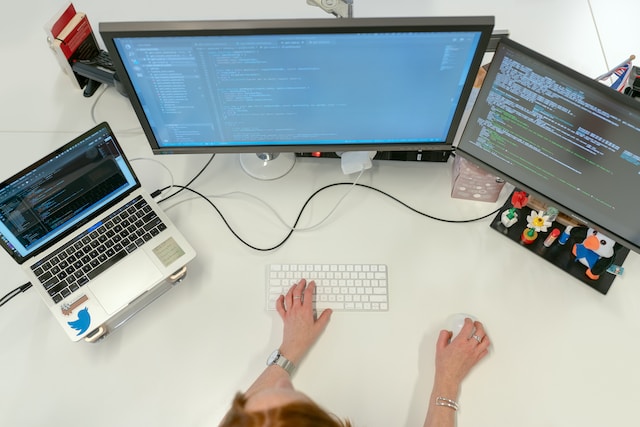Head of Security vs. Product Security Manager
Head of Security vs Product Security Manager: What's the Difference?

Table of contents
In the ever-evolving landscape of cybersecurity, organizations are increasingly recognizing the importance of robust security measures. Two pivotal roles in this domain are the Head of Security and the Product security Manager. While both positions are crucial for safeguarding an organization’s assets, they differ significantly in their focus, responsibilities, and required skills. This article delves into the definitions, responsibilities, required skills, educational backgrounds, tools and software used, common industries, outlooks, and practical tips for getting started in these roles.
Definitions
Head of Security: The Head of Security is a senior leadership role responsible for overseeing the entire Security strategy of an organization. This includes physical security, information security, and cybersecurity. The Head of Security ensures that the organization’s security policies align with its business objectives and regulatory requirements.
Product Security Manager: The Product Security Manager focuses specifically on the security of products and services offered by the organization. This role involves integrating security practices into the product development lifecycle, ensuring that products are designed and built with security in mind, and addressing Vulnerabilities that may arise post-launch.
Responsibilities
Head of Security
- Develop and implement a comprehensive security Strategy.
- Oversee the security team and manage security operations.
- Conduct risk assessments and vulnerability assessments.
- Ensure Compliance with industry regulations and standards.
- Collaborate with other departments to promote a security-aware culture.
- Report security incidents to executive management and the board.
- Manage security budgets and resources.
Product Security Manager
- Integrate security into the product development lifecycle.
- Conduct threat modeling and risk assessments for products.
- Collaborate with engineering teams to implement security features.
- Monitor and respond to security vulnerabilities in products.
- Develop and deliver security training for product teams.
- Ensure compliance with product-specific security standards.
- Liaise with customers and stakeholders regarding product security.
Required Skills
Head of Security
- Strong leadership and management skills.
- In-depth knowledge of cybersecurity frameworks and regulations.
- Excellent communication and interpersonal skills.
- Ability to analyze and mitigate risks effectively.
- Strategic thinking and problem-solving abilities.
- Familiarity with Incident response and crisis management.
Product Security Manager
- Proficiency in secure coding practices and software development.
- Strong understanding of threat modeling and vulnerability assessment.
- Knowledge of security testing tools and methodologies.
- Excellent collaboration and communication skills.
- Ability to work closely with cross-functional teams.
- Familiarity with product compliance standards (e.g., ISO, NIST).
Educational Backgrounds
Head of Security
- Bachelor’s degree in Information Security, Computer Science, or a related field.
- Master’s degree or MBA is often preferred.
- Professional certifications such as CISSP, CISM, or CISA.
Product Security Manager
- Bachelor’s degree in Computer Science, Software Engineering, or a related field.
- Master’s degree in a relevant field can be advantageous.
- Certifications such as CSSLP, CEH, or OSCP are beneficial.
Tools and Software Used
Head of Security
- Security Information and Event Management (SIEM) tools (e.g., Splunk, LogRhythm).
- Risk management software (e.g., RSA Archer, RiskWatch).
- Incident response tools (e.g., PagerDuty, ServiceNow).
- Compliance management tools (e.g., Qualys, TrustArc).
Product Security Manager
- Static and dynamic application security testing tools (e.g., Veracode, Checkmarx).
- Threat modeling tools (e.g., Microsoft Threat Modeling Tool, OWASP Threat Dragon).
- Vulnerability management tools (e.g., Nessus, Qualys).
- Code review and analysis tools (e.g., SonarQube, Fortify).
Common Industries
Head of Security
- Financial Services
- Healthcare
- Government
- Technology
- Retail
Product Security Manager
- Software Development
- Telecommunications
- Consumer Electronics
- Automotive
- Cloud Services
Outlooks
The demand for both Head of Security and Product Security Manager roles is expected to grow significantly in the coming years. As cyber threats become more sophisticated, organizations will prioritize security leadership and product security integration. According to the U.S. Bureau of Labor Statistics, employment for information security analysts is projected to grow by 31% from 2019 to 2029, much faster than the average for all occupations.
Practical Tips for Getting Started
-
Gain Relevant Experience: Start in entry-level cybersecurity roles to build foundational knowledge and skills. Positions such as security analyst or software developer can provide valuable experience.
-
Pursue Certifications: Obtain relevant certifications to enhance your credibility and demonstrate your expertise in security practices.
-
Network with Professionals: Join cybersecurity forums, attend industry conferences, and connect with professionals on platforms like LinkedIn to expand your network.
-
Stay Updated: Keep abreast of the latest security trends, threats, and technologies by following industry news, blogs, and research papers.
-
Develop Soft Skills: Focus on improving your communication, leadership, and collaboration skills, as these are crucial for both roles.
-
Consider Advanced Education: Pursuing a master’s degree or specialized training can provide a competitive edge in the job market.
By understanding the distinctions between the Head of Security and Product Security Manager roles, aspiring cybersecurity professionals can better navigate their career paths and make informed decisions about their future in the field.
Sr. Cybersecurity Engineer, IAM(ForgeRock)
@ Visa | Austin, TX, United States
Full Time Senior-level / Expert USD 139K - 202KDomain Consultant 2 ( Network Security )
@ Palo Alto Networks | D.C. , Washington , United States
Full Time Senior-level / Expert USD 198K - 273KOperations Analyst Senior
@ General Dynamics Information Technology | USA GA Robins AFB - Robins AFB (GAC011), United States
Full Time Senior-level / Expert USD 76K - 103KElectronic Warfare Supervisor (EWS) Tactical Trainer at SCSTC Det Southwest-San Diego, CA
@ General Dynamics Information Technology | USA CA San Diego - SCSTC Det SW (CAC147), United States
Full Time Mid-level / Intermediate USD 68K - 92KDevSecOps Lead Software Engineer
@ Boeing | USA - El Segundo, CA, United States
Full Time Senior-level / Expert USD 130K - 177K